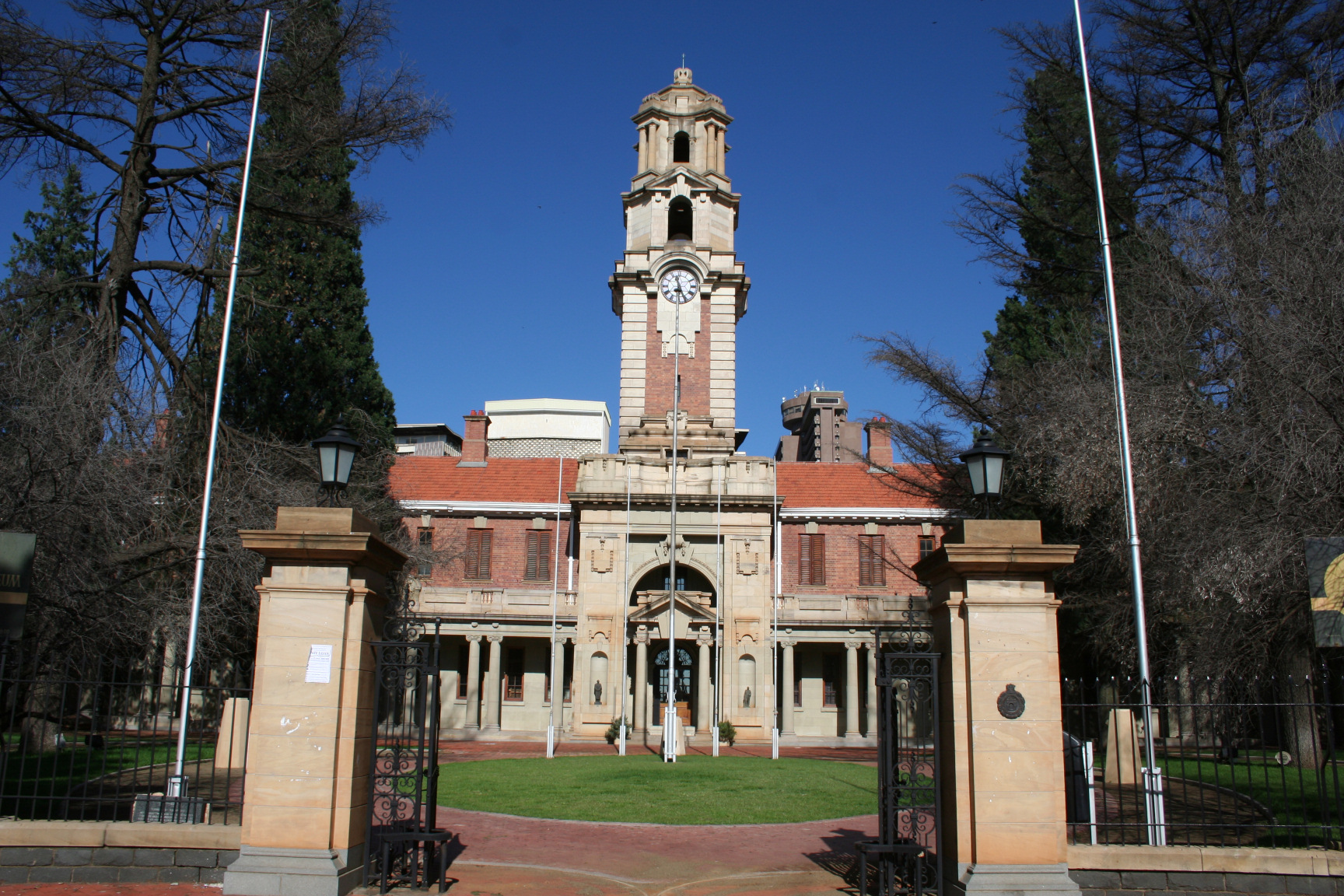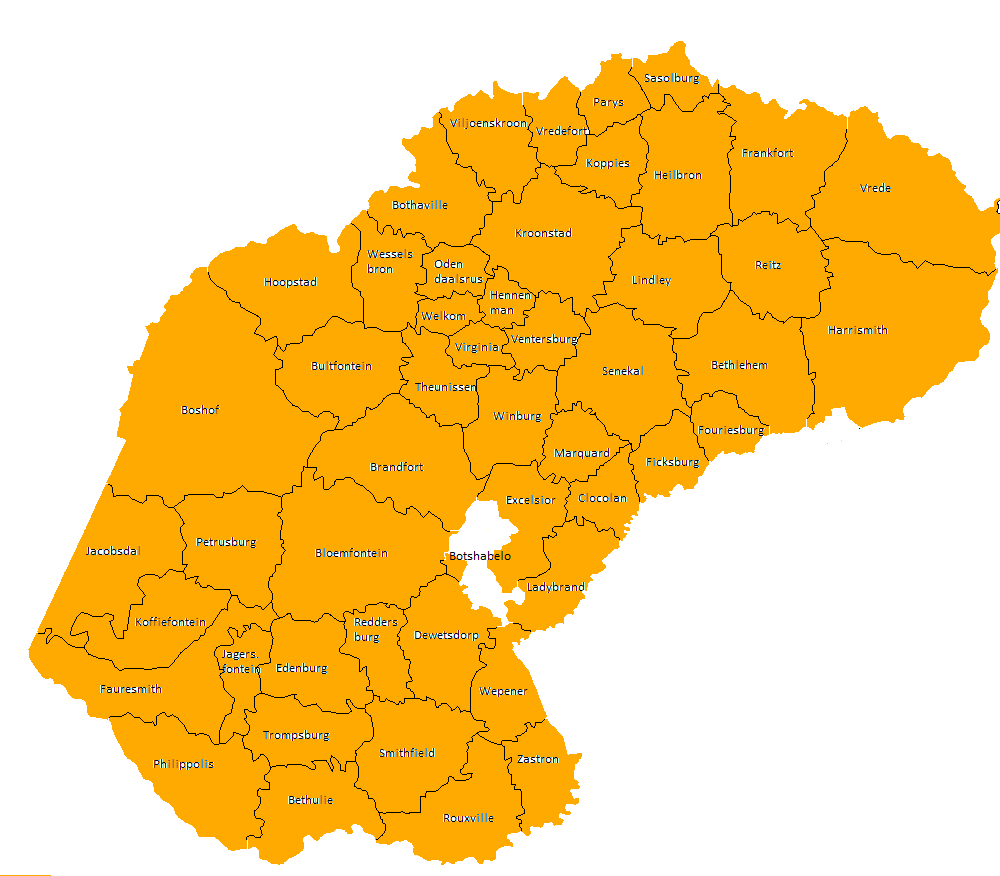|
National Afrikaans Literary Museum And Research Centre
The National Afrikaans Literary Museum and Research Centre ( af, Nasionale Afrikaanse Letterkundige Museum en Navorsingsentrum, NALN) is a central archive for material and information on the history, development, and scope of literature, music, and drama in the Afrikaans language. The NALN was founded in 1973 by the Free State provincial government and is based in Bloemfontein, South Africa. It operates as a nonprofit organization. The hours are Monday through Friday, 8:00 - 16:00. The NALN collection includes an estimated three quarters of a million items. These include books, manuscripts, magazines, newspapers, clippings, sheet music, posters, and programs, an audiovisual collection, and other unique artifacts. In addition, furniture and other effects of writers and other literary personalities can be viewed here. In front of the museum is a garden where several dignitaries have planted trees over the years. Busts of writers, musicians, and dramatists have been installed under ... [...More Info...] [...Related Items...] OR: [Wikipedia] [Google] [Baidu] |
Union Buildings
The Union Buildings ( af, Uniegebou) form the official seat of the South African Government and also house the offices of the President of South Africa. The imposing buildings are located in Pretoria, atop Meintjieskop at the northern end of Arcadia, close to historic Church Square and the Voortrekker Monument. The large gardens of the Buildings are nestled between Government Avenue, Vermeulen Street East, Church Street, the R104 and Blackwood Street. Fairview Avenue is a closed road through which only officials can enter the Union Buildings. Though not in the centre of Pretoria, the Union Buildings occupy the highest point of Pretoria, and constitute a South African national heritage site. The Buildings are one of the centres of political life in South Africa; "The Buildings" and "Arcadia" have become metonyms for the South African government. It has become an iconic landmark of Pretoria and South Africa in general, and is one of the most popular tourist attractions in th ... [...More Info...] [...Related Items...] OR: [Wikipedia] [Google] [Baidu] |
Sotho Language
Sotho () or Sesotho () or Southern Sotho is a Southern Bantu language of the Sotho–Tswana ("S.30") group, spoken primarily by the Basotho in Lesotho, where it is the national and official language; South Africa (particularly the Free State), where it is one of the 11 official languages; and in Zimbabwe where it is one of 16 official languages. Like all Bantu languages, Sesotho is an agglutinative language, which uses numerous affixes and derivational and inflexional rules to build complete words. Classification Sotho is a Southern Bantu language, belonging to the Niger–Congo language family within the Sotho-Tswana branch of Zone S (S.30). Although Southern Sotho shares the name ''Sotho'' with Northern Sotho, the two groups have less in common with each other than they have with Setswana. "Sotho" is also the name given to the entire Sotho-Tswana group, in which case Sesotho proper is called "Southern Sotho". Within the Sotho-Tswana group, Southern Sotho is most ... [...More Info...] [...Related Items...] OR: [Wikipedia] [Google] [Baidu] |
Cape Coloured
Cape Coloureds () are a South African ethnic group consisted primarily of persons of mixed race and Khoisan descent. Although Coloureds form a minority group within South Africa, they are the predominant population group in the Western Cape. They are generally bilingual, speaking Afrikaans and English, though some speak only one of these. Some Cape Coloureds may code switch, speaking a patois of Afrikaans and English called also known as Cape Slang (Capy) or , meaning Kitchen Afrikaans. Cape Coloureds were classified under apartheid as a subset of the larger Coloured race group. At least one genetic study indicates that Cape Coloureds have an ancestry consisting of the following ethnic groups: * Khoisan: (32–43%) * Bantu-speaking Africans: (20–36%) * Ethnic groups in Europe: (21–28%) * Asian peoples: (9–11%) Origin and history The Cape Coloureds are a heterogeneous South African ethnic group, with diverse ancestral links. Ancestry may include European settlers, i ... [...More Info...] [...Related Items...] OR: [Wikipedia] [Google] [Baidu] |
Minister Of Education (South Africa)
The Minister of Education used to be a Minister in the Cabinet of South Africa, with the responsibility of overseeing the Department of Education, including South Africa's schools and universities. On 10 May 2009 newly elected president Jacob Zuma split the education portfolio into that of the Minister of Basic Education and that of the Minister of Higher Education and Training. Ministers with responsibility for Education Post-apartheid period See also * Department of Education (South Africa) References External links Ministry of EducationDepartment of Education Education Education is a purposeful activity directed at achieving certain aims, such as transmitting knowledge or fostering skills and character traits. These aims may include the development of understanding, rationality, kindness, and honesty. Va ... Lists of political office-holders in South Africa {{SouthAfrica-gov-stub ... [...More Info...] [...Related Items...] OR: [Wikipedia] [Google] [Baidu] |
Johannes Petrus Van Der Spuy
Johannes is a Medieval Latin form of the personal name that usually appears as "John" in English language contexts. It is a variant of the Greek and Classical Latin variants (Ιωάννης, ''Ioannes''), itself derived from the Hebrew name '' Yehochanan'', meaning "Yahweh is gracious". The name became popular in Northern Europe, especially in Germany because of Christianity. Common German variants for Johannes are ''Johann'', ''Hannes'', '' Hans'' (diminutized to ''Hänschen'' or ''Hänsel'', as known from "''Hansel and Gretel''", a fairy tale by the Grimm brothers), '' Jens'' (from Danish) and ''Jan'' (from Dutch, and found in many countries). In the Netherlands, Johannes was without interruption the most common masculine birth name until 1989. The English equivalent for Johannes is John. In other languages *Joan, Jan, Gjon, Gjin and Gjovalin in Albanian *'' Yoe'' or '' Yohe'', uncommon American form''Dictionary of American Family Names'', Oxford University Press, 2013. *Yaḥy ... [...More Info...] [...Related Items...] OR: [Wikipedia] [Google] [Baidu] |
Human Sciences Research Council
The Human Sciences Research Council (HSRC) of South Africa is Africa's largest dedicated social science and humanities research agency and policy think tank. It primarily conducts large-scale, policy-relevant, social-scientific projects for public-sector users, for non governmental organisations and international development agencies in support of development nationally, in the Southern African Development Community (SADC) and in Africa. The HSRC also seeks to contribute to the research and development strategy of the HSRC's parent Department of Science and Technology, especially through its mission to focus on the contribution of science and technology to addressing poverty. The HSRC originates in the National Bureau of Education and Social Research (founded in 1929). In recent years the HSRC has undergone major restructuring, aligning its research activities and structures to South Africa's national development priorities: notably poverty reduction through economic devel ... [...More Info...] [...Related Items...] OR: [Wikipedia] [Google] [Baidu] |
Orange Free State (province)
The Province of the Orange Free State ( af, Provinsie Oranje-Vrystaat), commonly referred to as the Orange Free State ( af, Oranje-Vrystaat), Free State ( af, Vrystaat) or by its abbreviation OFS, was one of the four provinces of South Africa from 1910 to 1994. After 27 April 1994 it was dissolved following the first non-racial election in South Africa. It is now called the Free State Province. Its predecessor was the Orange River Colony which in 1902 had replaced the Orange Free State, a Boer republic. Its ''outside'' borders were the same as those of the modern Free State Province; except for the bantustans ("homelands") of QwaQwa and one part of Bophuthatswana, which were contained on land ''inside'' of the provincial Orange Free State borders. Districts in 1991 Districts of the province and population at the 1991 census. * Zastron: 14,122 * Rouxville: 11,904 * Bethulie: 9,333 * Smithfield: 7,946 * Wepener: 12,964 * Dewetsdorp: 13,521 * Reddersburg: 6,070 * Edenburg: 6,96 ... [...More Info...] [...Related Items...] OR: [Wikipedia] [Google] [Baidu] |
Orange River Colony
The Orange River Colony was the British colony created after Britain first occupied (1900) and then annexed (1902) the independent Orange Free State in the Second Boer War. The colony ceased to exist in 1910, when it was absorbed into the Union of South Africa as Orange Free State Province. Constitutional history During the Second Boer War, British forces invaded the Orange Free State, occupying the capital, Bloemfontein by 13 March 1900. Five months later, on 6 October 1900, the British government declared an official annexation of the full territory of the Orange Free State, this in-spite of the fact they had not yet occupied the full territory, nor defeated the Free State forces. The Free State government moved to Kroonstad during the early months of the war and its armies remained active in the field until the war's end. From the perspective of the Orange Free State, independence wasn't lost until they ratified the Treaty of Vereeniging on 31 May 1902. On the Boer side, ... [...More Info...] [...Related Items...] OR: [Wikipedia] [Google] [Baidu] |
Pretoria
Pretoria () is South Africa's administrative capital, serving as the seat of the Executive (government), executive branch of government, and as the host to all foreign embassies to South Africa. Pretoria straddles the Apies River and extends eastward into the foothills of the Magaliesberg mountains. It has a reputation as an academic city and center of research, being home to the Tshwane University of Technology (TUT), the University of Pretoria (UP), the University of South Africa (UNISA), the Council for Scientific and Industrial Research (CSIR), and the Human Sciences Research Council. It also hosts the National Research Foundation (South Africa), National Research Foundation and the South African Bureau of Standards. Pretoria was one of the host cities of the 2010 FIFA World Cup. Pretoria is the central part of the City of Tshwane Metropolitan Municipality which was formed by the amalgamation of several former local authorities, including Bronkhorstspruit, Centurion, Gaute ... [...More Info...] [...Related Items...] OR: [Wikipedia] [Google] [Baidu] |
Herbert Baker
Sir Herbert Baker (9 June 1862 – 4 February 1946) was an English architect remembered as the dominant force in South African architecture for two decades, and a major designer of some of New Delhi's most notable government structures. He was born and died at Owletts in Cobham, Kent. Among the many churches, schools and houses he designed in South Africa are the Union Buildings in Pretoria, St. Andrew's College, Grahamstown, St. John's College, Johannesburg, the Wynberg Boys' High School, Groote Schuur in Cape Town, and the Champagne Homestead and Rhodes Cottage on Boschendal, between Franschhoek and Stellenbosch.Boschendal 2007. Publisher Boschendal Limited With Sir Edwin Lutyens he was instrumental in designing, among other buildings, Viceroy's House, Parliament House, and the North and South Blocks of the Secretariat, all in New Delhi, which in 1931 became the capital of the British Raj, as well as its successor states the Dominion of India and the Republic of India. ... [...More Info...] [...Related Items...] OR: [Wikipedia] [Google] [Baidu] |
Afrikaans Language
Afrikaans (, ) is a West Germanic languages, West Germanic language that evolved in the Dutch Cape Colony from the Dutch dialects, Dutch vernacular of Holland, Holland proper (i.e., the Hollandic dialect) used by Dutch, French, and German settlers and Slavery in South Africa, their enslaved people. Afrikaans gradually began to develop distinguishing characteristics during the course of the 18th century. Now spoken in South Africa, Namibia and (to a lesser extent) Botswana, Zambia, and Zimbabwe, estimates circa 2010 of the total number of Afrikaans speakers range between 15 and 23 million. Most linguists consider Afrikaans to be a partly creole language. An estimated 90 to 95% of the vocabulary is of Dutch origin with adopted words from other languages including German language, German and the Khoisan languages of Southern Africa. Differences between Afrikaans and Dutch, Differences with Dutch include a more analytic language, analytic-type Morphology (linguistics), morphology ... [...More Info...] [...Related Items...] OR: [Wikipedia] [Google] [Baidu] |






